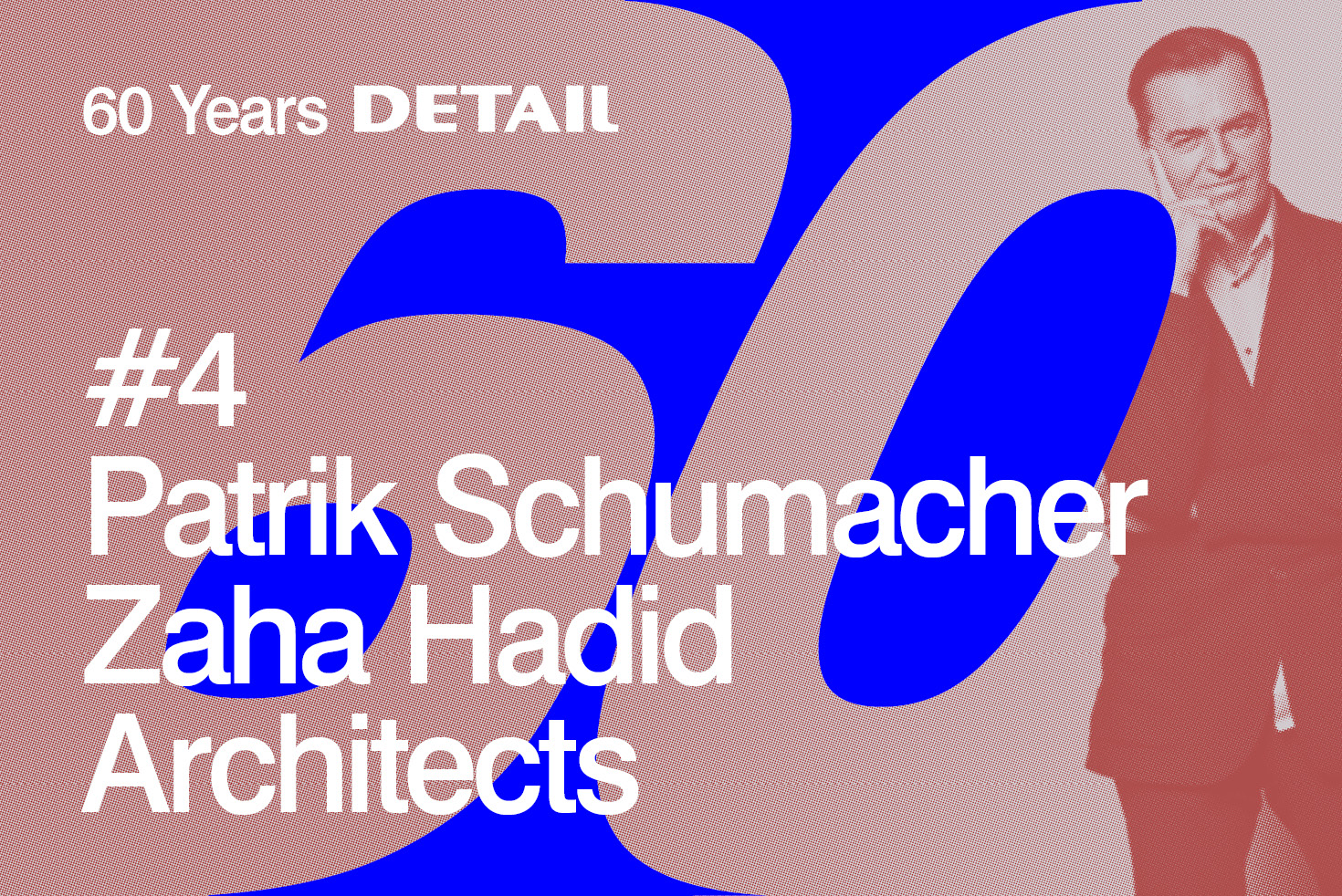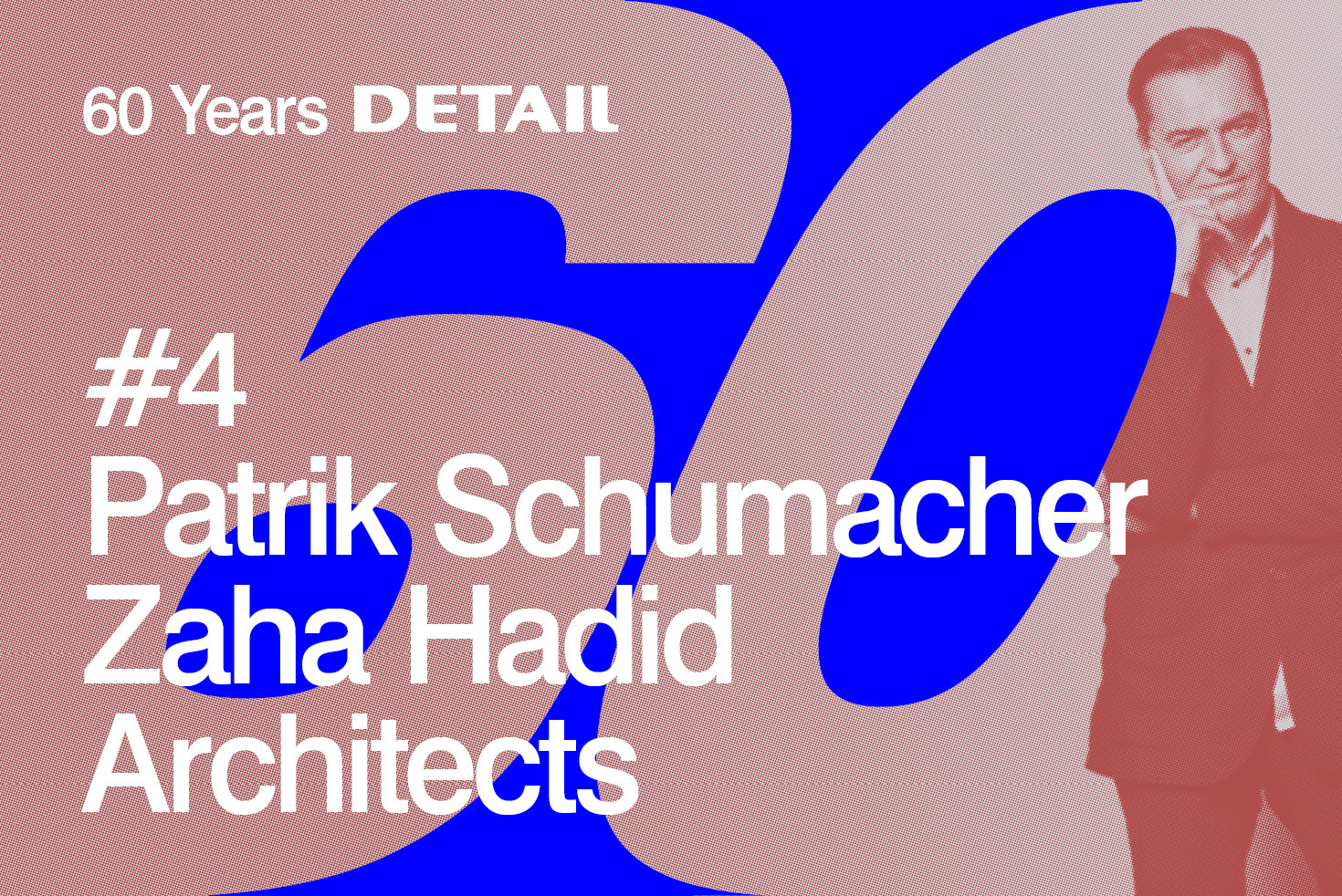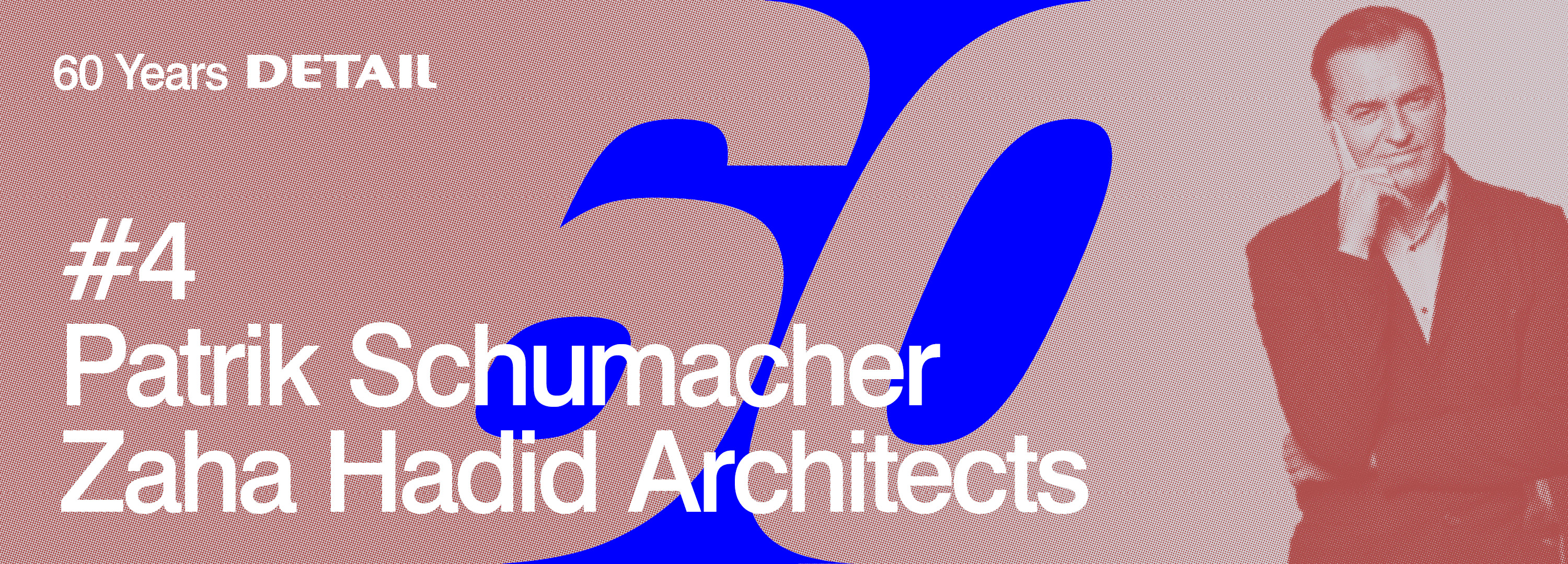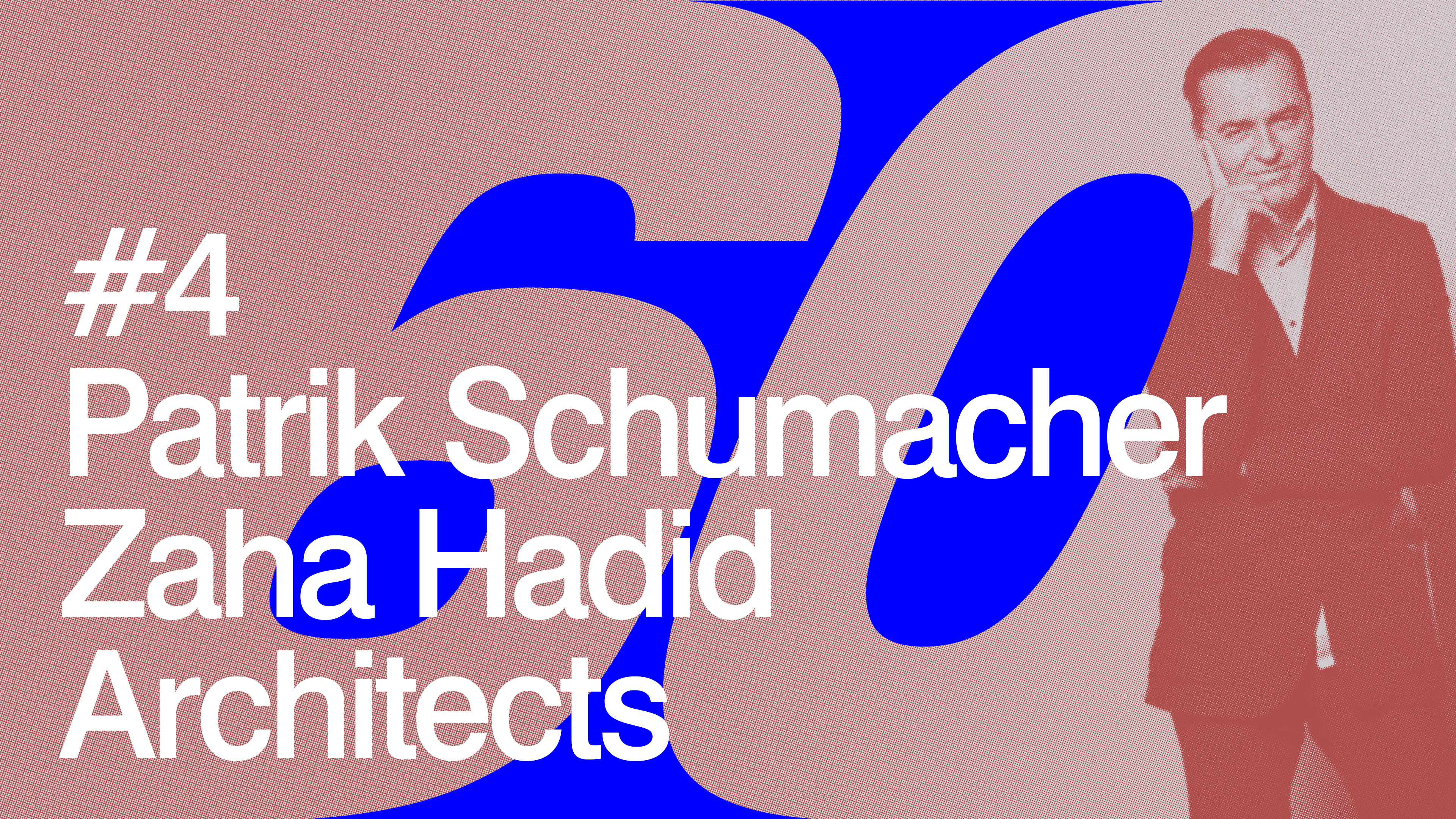60 Years of Detailing: Patrik Schumacher about the Past and the Future of Architecture

Foto: Kim Mun
In the year 2008 Patrik Schumacher coined the term parametricism. He defined it as the predominant style of the 21st century. The term refers to the creation of soft and differentiated forms by use of powerful computers. On the occasion of our 60th anniversary the principal architect of Zaha Hadid Architects reveals to us his view of the architecture of the future and the prolific character of the 1960s.
What did the 1960s leave is in terms of architecture?
The 1960s (like the 1920s) were an amazingly fertile decade for architecture as well as for culture and technology in general. The decade witnessed both the completion of mature masterpieces of modernism like Le Corbusier’s Palace of Assembly in Chandigarh, Louis Kahn’ Salk Institute, Mies van der Rohe’s Berlin National Gallery, and Oscar Niemeyer’s Ministry of Foreign Affairs in Brasilia among many others. However, the decade also delivered a new radical avant-gardism via groups like the Metabolists, Archigram, Superstudio, the Situationists etc. Further, the 1960s delivered major advances in architectural theory via sophisticated figures like Christopher Alexander and Colin Rowe. This was also the decade where architectural semiology first emerged. Finally, the 1960s brought architecture’s first creative engagement with digital computers via Negroponte’s ‘Architecture Machine Group’ at MIT.
When did you first come across DETAIL?
I came across DETAIL as an architecture student at Stuttgart University in the mid 1980s. At that time I was closely following the work of Norman Foster and the British High Tech school where close attention to creative detailing is of crucial importance. The importance of controlling the final detailing of architectural works remains of high importance even in the contemporary world where complex projects are designed with the help of engineer, including façade engineers. Detailing is certainly not a merely technical discipline but is critical to the aesthetic, emotional, and semantic performance of buildings.
Where do you think architecture will stand in 60 years’ time?
In 60 years detailing will remain of crucial importance. The discipline of architecture will further concentrate on social functionality and will have further distilled its essential core competency of framing communicative interactions via its own communicative capacity. The semiological project will be recognized as the key to successful architecture. I also foresee the fusion of urban and architectural spaces with virtual communication spaces, i.e. with cyber space. The discipline of architecture will take over from the graphic designers with respect to the design of many or most web based interactions.
Patrik Schumacher is principal of Zaha Hadid Architects. He joined Zaha Hadid in 1988 and was seminal in developing Zaha Hadid Architects to become a 400 strong global architecture and design brand. Patrik Schumacher studied philosophy, mathematics and architecture in Bonn, Stuttgart and London. He received his Diploma in architecture in 1990. He has been a partner since 2003 and a co-author on all projects. In 2010 Patrik Schumacher won the Royal Institute of British Architects’ Stirling Prize for excellence in architecture together with Zaha Hadid, for MAXXI, the National Italian Museum for Art and Architecture of the 21st century in Rome. He is an academician of the Berlin Academy of Arts. In 1996 he founded the Design Research Laboratory at the Architectural Association in London where he continues to teach. In 1999 he completed his PHD at the Institute for Cultural Science, Klagenfurt University. Patrik Schumacher is lecturing worldwide and recently held the John Portman Chair in Architecture at Harvard’s GSD. Over the last 20 years he has contributed over 100 articles to architectural journals and anthologies. In 2008 he coined the phrase Parametricism and has since published a series of manifestos promoting Parametricism as the new epochal style for the 21st century. In 2010/2012 he published his two-volume theoretical opus magnum “The Autopoiesis of Architecture”. Patrik Schumacher is widely recognized as one of the most prominent thought leaders within the fields of architecture, urbanism and design.



